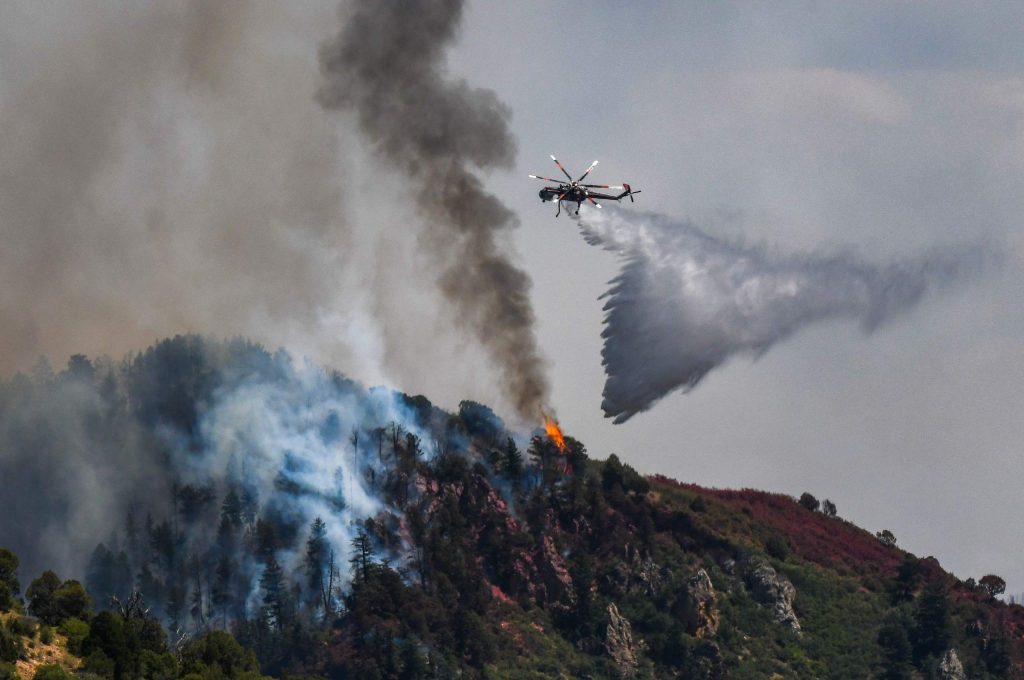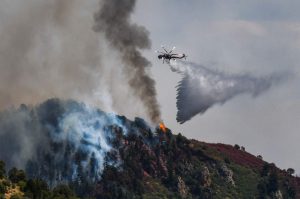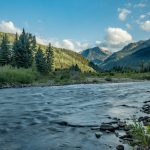Wildfire Collaborative Roaring Fork Valley secures $865,000 to boost Glenwood Springs’ wildfire resilience

Post Independent archive
The Wildfire Collaborative Roaring Fork Valley secured $865,009 in national grant funding for a project aimed at mitigating wildfires and increasing home resilience in Glenwood Springs.
“We’re so grateful to have these resources to put to real, on the ground fuels reduction work,” Wildfire Collaborative Roaring Fork Valley Executive Director Angie Davlyn said. “That’s something that the Collaborative has been really wanting to prioritize. We think it’s so important not just to raise funds, but to put them straight to work reducing our critical wildfire risk valley-wide.”
The collaborative was awarded the grant from the U.S. Department of Agriculture’s (USDA) Community Wildfire Defense Grant program.
Launched in 2022, the five year, $1 billion competitive grant program is funded by the Infrastructure Investment and Jobs Act. It aims to help at-risk communities plan for and mitigate wildfire danger on non-federal lands.
The grant prioritizes low-income communities at high risk of wildfire that have also experienced a disaster within the last decade that increased wildfire vulnerability. As of January, 34% of grant funds had been awarded to low-capacity communities, compared to just 4% from FEMA’s Building Resilient Infrastructure and Communities program, according to Headwaters Economics.
Eligible uses of the funding include creating or changing community wildfire protection plans and implementing projects outlined in those plans.
Last week, the USDA announced funding for 58 community projects across 22 states — selected from 573 applicants — totaling more than $200 million. All selected projects were considered high wildfire risk, low-income and impacted by severe disaster, according to a Sept. 23 USDA news release. Colorado received $26.3 million for eight projects.
“Colorado continues to face devastating threats from worsening wildfires. This year, we saw one of the largest fires in our state’s history,” Colorado U.S. Senator Michael Bennet said. “Wildfires endanger lives, devastate communities, and destroy critical infrastructure. Investing in wildfire mitigation and preparedness is critical to safeguarding our communities, public lands, and way of life for future generations.”
The Wildfire Collaborative will use the funds to implement the Glenwood Springs Wildfire Mitigation and Home Resilience Project.
The project focuses on reducing wildfire risk, improving community emergency preparedness and protecting infrastructure in high-risk areas through enhancing emergency access, hazardous fuel reduction and supporting home resilience, according to a Thursday news release from the Wildfire Collaborative.
“The funding is for both hazardous fuels reduction — we’ll reduce fuels in higher load areas and community spaces and also along evacuation routes — and then for defensible space work, so we can come in and help remove hazardous fuels that are closer to houses to make sure those homes have a good chance of withstanding wildfire embers,” Davlyn said.
Identified high-risk areas include Glenwood Springs’ Three and Four Mile neighborhoods and the Three Mile Mobile Home Park. Home to roughly 100 residents, the park is located on a steep, heavily vegetated hillside that increases its wildfire vulnerability, according to the release.
“One of the things that we think made this application successful is that we had done a lot of work to solidify partnerships with governments and homeowners and we saw a lot of investment in home resiliency from a lot of the homeowners in the area,” Davlyn said. ” I think that made it easy for funders to continue to support this area, knowing that the investment from homeowners was already strong.
“Similarly, it’s really exciting for us to continue supporting work in areas where homeowners are being as proactive as they can,” she added. “We know their budgets are limited, and so for us to be able to bring in additional funding to areas that have shown a real desire and a commitment feels really great.”
The Wildfire Collaborative is partnering with Hussam Mahmoud, a civil and environmental engineering professor at Vanderbilt University, to identify which areas would most benefit from mitigation efforts.
Mahmoud applies graph theory to create wildfire models that predict how fires will spread through both natural terrain and constructed environments.
“(Hussam Mahmoud) has the only advanced wildfire model that can accurately understand how wildfire moves, not just through vegetation, but also through the built environment,” Davlyn said. “Most other wildfire models treat homes as if they are trees. His model shows how fire travels through three fire pathways: convection, radiation, and ember spotting, and can, with impressive 85% accuracy, predict how a fire will move in a particular area.
“The great thing is that that modeling will tell us where the most effective treatments are to slow the spread of fire, protect homes, and save lives,” she added.
Using Mahmoud’s model, the Wildfire Collaborative will prioritize projects that improve evacuation planning, slow fire spread and reduce the likelihood of homes catching fire, according to a Thursday news release. On-the-ground efforts will commence after the Wildfire Collaborative receives the grant funding, though an exact disbursement date has not yet been confirmed, according to Davlyn.
“When that modeling is complete, which should be in early 2026, we’ll have a really clear sense of where to put all the different treatments, from fuels reduction to defensible space work to prescribed burns, in order to be the most effective both from a wildfire resiliency standpoint and a cost standpoint,” Davlyn said. “I imagine that the wildfire modeling will show that, even with this large grant, there’s more work to be done than we have funding available for, and so wildfire modeling is a really important tool so that we’re maximizing our dollars.”
Since April 2024, the Wildfire Collaborative has raised $5.4 million in funding for wildfire resiliency projects from Aspen to Glenwood Springs. Other current projects include a hazardous fuels reduction project between Carbondale and Snowmass Village, evacuation planning in Marble and shaded fuel break creation in Basalt, according to the release.

Support Local Journalism

Support Local Journalism
Readers around Glenwood Springs and Garfield County make the Post Independent’s work possible. Your financial contribution supports our efforts to deliver quality, locally relevant journalism.
Now more than ever, your support is critical to help us keep our community informed about the evolving coronavirus pandemic and the impact it is having locally. Every contribution, however large or small, will make a difference.
Each donation will be used exclusively for the development and creation of increased news coverage.










